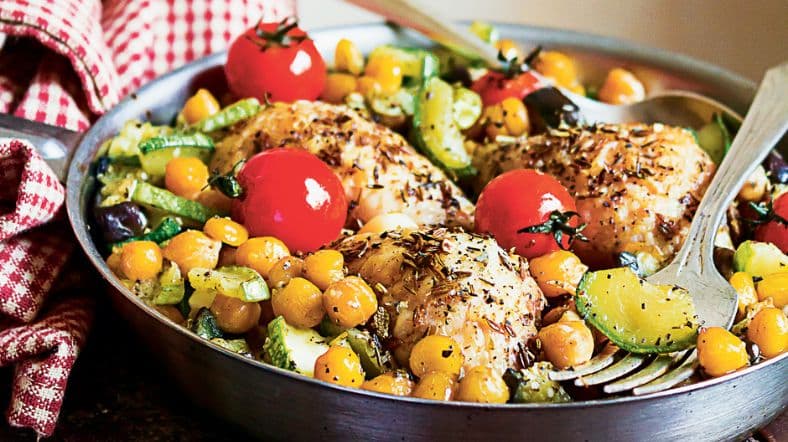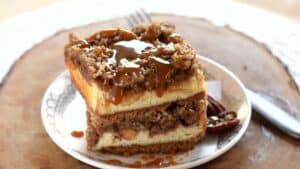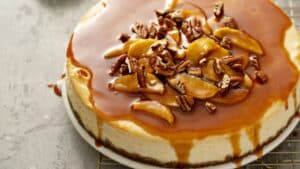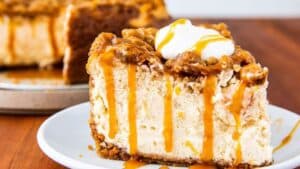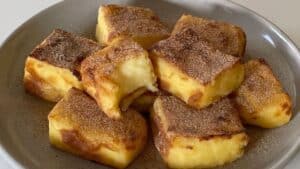The truth? Most chickpea salads out there are boring. Mushy, predictable, sometimes dry enough to challenge cardboard. But when you layer fresh herbs, bold acid, crisp textures, and just the right amount of unhinged flair you don’t get a side dish. You get a centerpiece. That’s exactly what Herb Chickpea Salad Pitas are.
This isn’t your average hummus-in-pita affair. We’re talking a full-throttle herbaceous explosion where Middle Eastern backbone meets modern Mediterranean flair, packed into a soft warm pocket that honestly feels like a hug. In this guide, we’re diving deep. Real-deep. From balancing acid and oil, to why you should never, ever use canned chickpeas without a rinse-and-slather they deserve better we’re covering it all.
Let’s go beyond lunchbox filler. Let’s make this a star.
Why Chickpea Salad Pitas Aren’t Just Trendy They’re Culinary Workhorses
Let’s get real. Chickpeas are everywhere for a reason. According to a 2023 report by the International Pulse Council, chickpea consumption increased by 11.7% globally over 2 years. Not just for vegans anymore. Professional kitchens from Copenhagen to Cairo are treating the humble garbanzo like royalty.
Why? Three words: protein, versatility, texture. One cup of chickpeas packs about 14.5g of protein, 12.5g of fiber, and a nutty bite that holds up better than most plant-based fillers in sandwiches. It’s a smart swap for tuna, egg, or chicken salads plus it doesn’t stink up the walk-in.
But here’s the catch texture is king. You can’t just mash and go. Good chickpea salad is about layering. Contrast. Crunch. Something creamy. Something punchy. Let’s unpack that.
The Core Components of a Professional-Grade Herb Chickpea Salad

H2: 1. The Chickpeas: Dry vs. Canned (Spoiler: Use Dry if You Can)
Listen, I know it’s tempting to crack open a can. But you’re not at a potluck, you’re building flavor like a pro.
Dry chickpeas soaked overnight and simmered with aromatics (bay leaf, smashed garlic, a halved onion) taste completely different. They hold their shape better. They soak up dressing like sponges with manners.
But life happens. If you’re using canned, rinse ’em. Rinse ‘em till they squeak. Then pat dry. Let them sit out 15 min before mixing, so they don’t water down your dressing. Nobody likes a soggy pita pocket. Trust me.
H2: 2. Fresh Herbs: The Backbone of This Salad
If you’re not going big on herbs here, you’re doing it wrong.
We’re not sprinkling parsley for garnish we’re shoving in fistfuls. Think Italian parsley, dill, mint, cilantro, chives. Herbs are the flavor, not the accessory.
Here’s a solid ratio:
For every 2 cups of chickpeas, add 1 packed cup of chopped fresh herbs. Yes, that much.
Dill brings coolness. Mint gives lift. Parsley brings pepper. Cilantro adds depth. Use all of ’em or at least 3.
And chop them coarse. None of that minced nonsense. You want texture.
H2: 3. The Dressing: Bright, Briny, Balanced
This ain’t mayo-town. This is acid-driven dressing at its best.
Here’s the baseline:
- ¼ cup fresh lemon juice
- 1 small garlic clove, grated
- 1 tsp Dijon mustard
- 1 tsp za’atar or sumac (yes, optional but do it)
- ⅓ cup good olive oil
- Salt and black pepper. Don’t be shy.
Whisk it. Taste it. If it makes you pucker just slightly? That’s perfect. That’s what the chickpeas need. They’re sponges, not stars.
Optional but awesome: Add a splash of brine from pickled red onions or capers. Adds umami and funk in a way lemon juice alone can’t.
H2: 4. Crunch & Cream: Add-Ins That Make It Sing
Salad needs layers. Think like a DJ, not a cook.
Here’s what to toss in:
- Finely chopped celery – for sharp crunch.
- Radishes – peppery, juicy.
- Crumbled feta or vegan almond ricotta – creamy, salty, cooling.
- Pickled onions – acidic lift.
- Toasted sunflower seeds or crushed roasted chickpeas – double texture. Major win.
Optional but killer: Chopped preserved lemon. Adds depth and a punch of floral saltiness.
One thing to never do? Add cucumbers unless serving immediately. They leak like gossip and ruin the structure. Learned that one the hard way.
Why Pitas Matter More Than You Think
A dry, sad pita can ruin this entire production. You know the kind. Crumbly, like it’s been sitting under a heat lamp since 2019. Not good.
Here’s what to do:
- Buy fresh, soft pitas or flatbreads. Preferably baked same day.
- Warm before stuffing. Use a hot skillet, no oil. Just 30 seconds per side. Wakes up the gluten and aroma.
- Brush the inside lightly with olive oil if using thin pita. Helps with structural integrity.
If you wanna take it next level: smear a little tahini or labneh inside before adding the salad. Acts as a barrier. Also tastes absurdly good.
Real-World Kitchen Variations That Work
At Zaatar & Fig in LA, the chef tosses in finely chopped preserved lemon, Aleppo pepper, and a touch of grated cucumber (served immediately timing matters). It’s fast become a customer favorite, especially among the weekday lunch crowd.
Meanwhile, a bistro in Lisbon serves a deconstructed version on open-faced focaccia with lemon oil drizzle and shaved kohlrabi. Completely untraditional. Totally working.
Point is this dish adapts. That’s why it works on menus across cuisines. Just hold the line on herbs, acid, and texture.
The Myth of “Healthy” vs. “Flavorful”
Here’s the problem with health-forward menu design: people assume you have to sacrifice boldness. Not true.
This salad clocks in at under 400 calories per filled pita, with no saturated fats if you skip the cheese, but still explodes with flavor. That’s the trick build depth from herbs, acid, aromatics, not fat and sugar.
You’re not just feeding vegetarians. You’re feeding palates. This dish hits those deep flavor sensors without the drag of heaviness.
Pro tip: Add smoked paprika or charred scallion oil to the dressing for deeper flavor without added weight.
Answering the Doubters: “Isn’t This Just Fancy Hummus?”

Ugh, no. No it’s not.
Hummus is a puree. Smooth, spreadable. A base.
This salad is chunky, layered, multi-textural. Every bite hits different. That’s the point.
It’s like calling niçoise salad “just a fancy tuna can.” Lazy thinking.
So if someone tells you it’s hummus in disguise, hand them a fork and let the herbs do the talking.
Storage, Shelf Life, and Scaling for Service
This is where it gets interesting for catering and prep kitchens.
Chickpea salad holds beautifully for 2–3 days in the fridge. In fact, it often tastes better the next day. The herbs fade a little, but the dressing soaks in deep.
Best practice:
- Make salad in the morning, serve by lunch rush.
- Refresh herbs and acid (splash of lemon + handful of parsley) if serving Day 2.
- Always store pita separately to avoid sogginess.
Scaling? Easy.
- 1½ cups salad per pita is the sweet spot for handhelds.
- For buffet service, serve deconstructed with pita on the side and a spoon of labneh.
Emerging Trend: The Mediterranean Deli Sandwich Revolution
Here’s something to watch fast-casual chains are adding chickpea-centric pitas to menus as meat-alternatives skyrocket in demand.
According to Mintel’s 2024 Plant-Based Eating Report, over 39% of consumers actively seek non-meat sandwiches at least once a week. But they still want bold flavors.
Enter: Herb Chickpea Salad Pitas.
They’re vegan (or vegetarian), travel well, hit all the health boxes, and most importantly they photograph beautifully. That matters now.
Final Thoughts: A Dish That Works Harder Than You Think
If you’re not putting chickpea salad pitas on your lunch, catering, or grab-n-go menu you’re missing out.
It’s plant-based, yes. But more than that it’s textural perfection wrapped in soft bread. The kind of dish people remember and order again.
Keep the acid high. Keep the herbs fresh. And for the love of flavor don’t mash the chickpeas to death.
Let them shine.
Would you like a printable professional recipe sheet for kitchen use?
